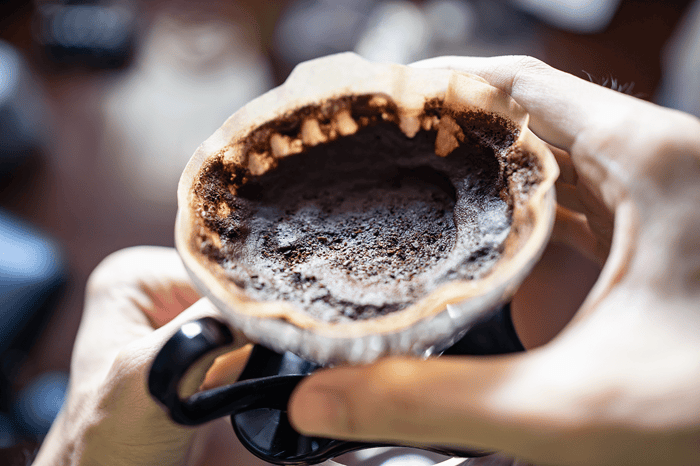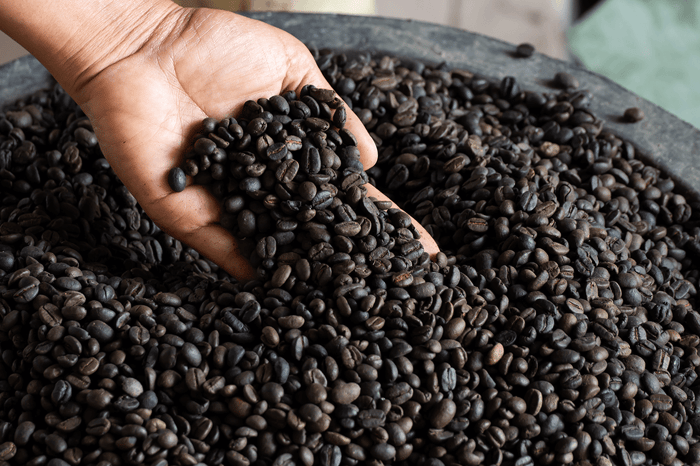
Instead of just throwing all those used coffee grounds away, get some extra use out of your coffee habit by recycling and reusing them around your house.
And no, we’re not just talking compost. But also, we are talking that, a little bit.
You can put your spent coffee grounds to great use outside, in your garden, even on the grill. Yep. I said grill. Intrigued now? Great! Here are some of the best ways to reuse grounds.
1. Rub it In
Believe it or not, you can use fresh coffee grounds by adding some extra flavor to your steaks and burgers. Since dried coffee grounds have a grainy texture and naturally stick well to raw meat, they make a perfect ingredient in a dry rub.
To make a simple coffee rub, mix completely dried-out grounds with other ingredients like peppercorns or coarse black pepper and salt. Before you start rubbing, make sure to pat the meat dry with paper towels. Then, just sprinkle the mixture directly on the raw meat and work it in with your hands.
Always use "fresh" coffee grounds—that is, brew some coffee first, then take the grounds and dry them out completely right before you use them on the meat.
Fresh coffee grounds add a much more robust flavor to cooking than grounds that have been sitting on your counter or in the pantry for a long time. For those, a much better use is to:
2. Perk Up Your Plants
Coffee grounds aren’t just chock full o’ nutrients like nitrogen and potassium. They can also alter the pH of your soil to make some plants happier and healthier.
You’ve probably heard about people using old coffee grounds as compost, but you don’t want to go flinging it around your plants wily-nily. Coffee grounds are slightly acidic, so you’ll want to make sure you only use them on plants that prefer soil with higher acidity. Look up the specific soil preferences for your plants, and grab a pH meter to measure the acid levels in your soil before you go making it more acidic.

One common mistake people make is to use way too much coffee (considered a “green” organic material) and not enough “brown” organic material. I know that’s confusing. In general, you’ll only want to use about a half-inch of coffee grounds for every four inches of mulch.
You also want to make sure that your coffee grounds are completely cooled down before you use them on your plants.
If you have any pets who roam around your yard, make sure you mix the coffee grounds in well with the soil. The smell of coffee grounds mixed with all that delicious dirt is enticing to some animals, including dogs and cats.
3. Keep Bugs at Bay
Coffee grounds aren’t just nutritious for plants, they’re also a potent natural repellent for many common backyard pests like ants, wasps, and mosquitos—as well as garden pests like slugs and snails.
Ants especially hate coffee grounds. Not because those little bastards don’t appreciate the smell of good coffee, but because the acid in coffee grounds actually damages ant exoskeletons. And, since ants have an incredible sense of smell, they’ll try their best to avoid them.
If your garden is under constant assault by ants or other insect pests, try surrounding it with a 2-3 inch thick solid perimeter of coffee grounds instead of spraying man-made chemical pesticides. Ants are persistent, so make sure the perimeter is continuous or they’ll just find a way around the barrier.
Some people even burn dry coffee grounds like incense to keep mosquitos and other pests away from their deck, patio, or other outdoor entertainment areas, although this seems to have varying success. Adding some dried bay leaves into the mix makes a more potent repellent. If you want to try this, you’ll definitely want to make sure you choose a burning location (or several locations) carefully where the wind isn’t blowing the scent where people are hanging out. It’s called “repellent” for a reason.
Keeping grounds around is a good way to become a more sustainable coffee drinker, and save some cash in the process.






